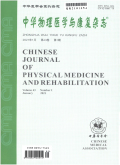10.3760/cma.j.issn.0254-1424.2022.06.106
Real-world effectiveness of hyperbaric oxygen therapy for delayed neuropsychiatric sequelae after carbon monoxide poisoning
Objective:To assess real-world effectiveness of hyperbaric oxygen therapy (HBOT) on delayed neuropsychiatric sequelae (DNS) after carbon monoxide (CO) poisoning we conducted a retrospective review of patients with CO poisoning admitted to Linkou Chang-Gung Memorial Hospital, Taiwan′s largest medical center, during 2009-2015.Methods:We included patients developing DNS after CO poisoning and compared improvements in neuropsychiatric function, with and without HBOT, after 12 months post-DNS to understand differences in recovery rates. DNS improvement-associated factors were also evaluated. We used receiver operating characteristic (ROC) curve analysis to assess the role of time elapsed between DNS diagnosis and HBOT initiation in predicting DNS improvement.Results:A total of 62 patients developed DNS, of whom 11 recovered while the rest did not. Possible factors predicting DNS improvement included receiving HBOT post-DNS (72.7% vs 25.5%;
P=0.006), and treatment with more than three HBOT sessions during acute stage CO poisoning (81.8% vs 27.5%;
P=0.003). The relevant area under the ROC curve was 0.789 (95% CI 0.603-0.974), and the best cut-off point was 3 days post-DNS diagnosis, with 87.5% sensitivity and 61.5% specificity.
Conclusion:Early HBOT in patients who developed DNS after CO poisoning significantly improved their DNS symptoms, with treatment effects sustained for 1 year after DNS diagnosis.
44
2023-05-30(万方平台首次上网日期,不代表论文的发表时间)
共1页
559




